South Texas Butterfly Photos - Grass Skippers
by Will Cook
Here's a selection butterfly images from three trips to Texas, June 5-7 and October 13-19, 2004 (full trip list) and April 29, 2011. South Texas is a butterflier's paradise!
Papilionidae | Pieridae | Lycaenidae | Riodinidae | Nymphalidae 1 | Nymphalidae 2 | Hesperiidae 1 | Hesperiidae 2
Hesperiidae - Skippers
Hesperiinae - Grass Skippers
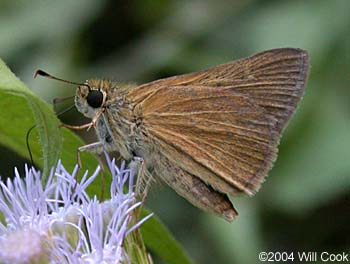
| Julia's Skipper (Nastra julia) Related to North Carolina's Swarthy Skipper, but larger and with a hint of a pale 7 on the hindwing below. |
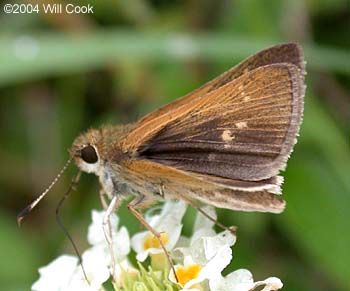
| Julia's Skipper (Nastra julia) |
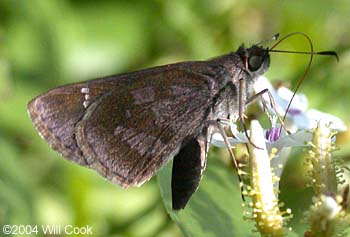
| Fawn-spotted Skipper (Cymaenes odilia), fresh Similar to the more common Clouded Skipper, but smaller and with a subtly different pattern. |
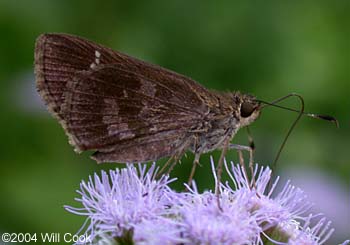
| Fawn-spotted Skipper (Cymaenes odilia), fresh |
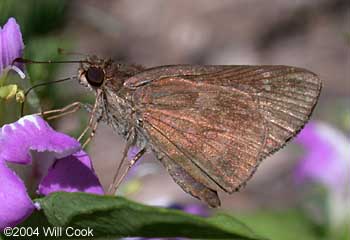
| Fawn-spotted Skipper (Cymaenes odilia), worn The field marks can be on the subtle side... |
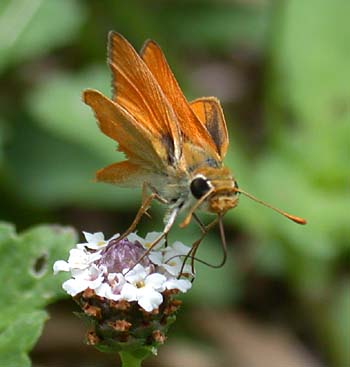
| Orange Skipperling (Copaeodes aurantiaca) |
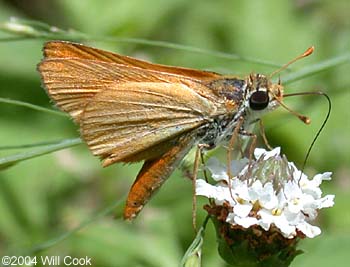
| Orange Skipperling (Copaeodes aurantiaca) |
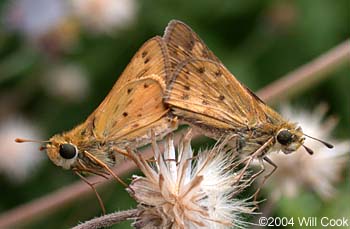
| Fiery Skipper (Hylephila phyleus), male (left) and female The most common grass-skipper. Compare with Fiery Skipper from North Carolina. |
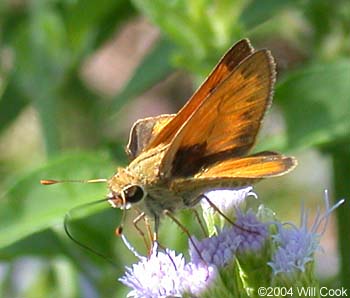
| Whirlabout (Polites vibex), male Common. Females look quite different from females of Whirlabout in North Carolina - much less distinctly marked. |
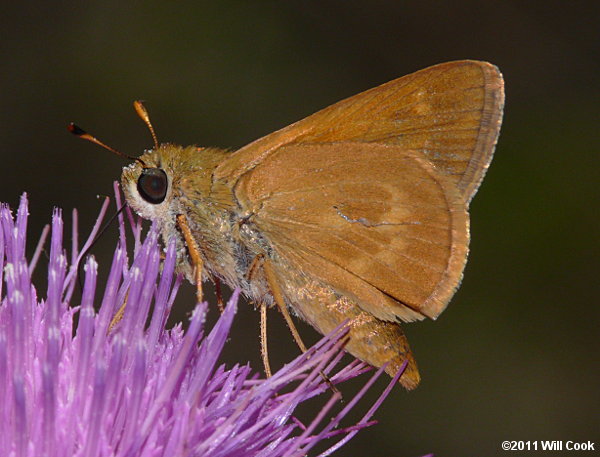
| Southern Broken-Dash (Wallengrenia otho) Barton Creek greenbelt, Austin, Travis Co., TX 4/29/2011. |
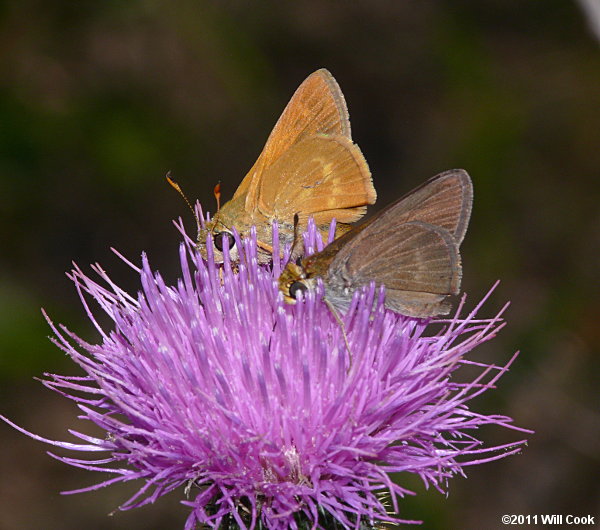
| Same individual with a Dun Skipper (Euphyes vestris). Barton Creek greenbelt, Austin, Travis Co., TX 4/29/2011. |
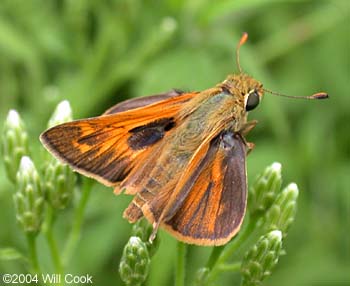
| Sachem (Atalopedes campestris), male Compare with Sachem from North Carolina. |
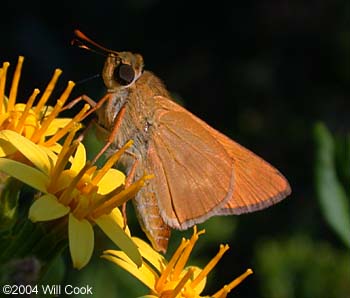
| Common Mellana (Quasimellana eulogius), male The main confusion species is Southern Broken-Dash, which usually is a darker, richer orange-brown (Mellana is a paler orange-yellow-brown) and has a 3-pattern instead of a 7-pattern of pale dots on the underside of the hindwing. Common Mellana males remind me of Byssus Skipper, which doesn't occur in south Texas. Meske's Skipper is also similar, but much more flighty than the relatively sedentary (and thus easier to photograph) Mellana and Byssus. |
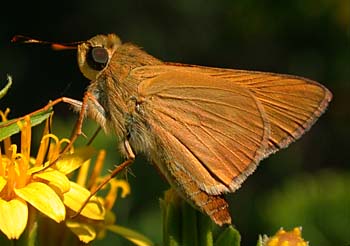
| Common Mellana (Quasimellana eulogius), male |
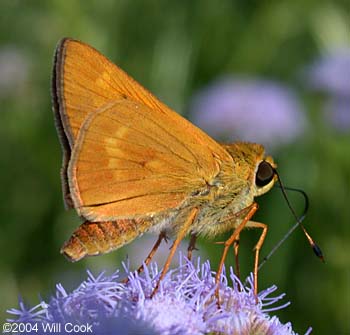
| Common Mellana (Quasimellana eulogius), male This individual has a spot pattern a little more similar to that of a Southern Broken-Dash. |
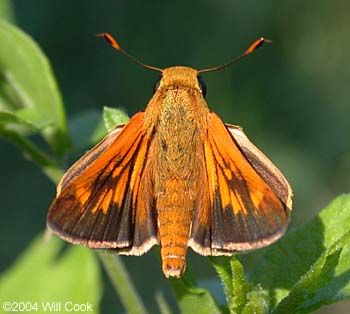
| Common Mellana (Quasimellana eulogius), male The pattern on the upper side is also similar to Southern Broken-Dash, but note that there is no black stigma. |
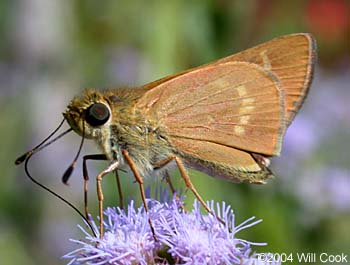
| Common Mellana (Quasimellana eulogius), female Females are quite different from males, with a darker, duller brown ground color, and paler spots in a smoothly curving 7 pattern. |
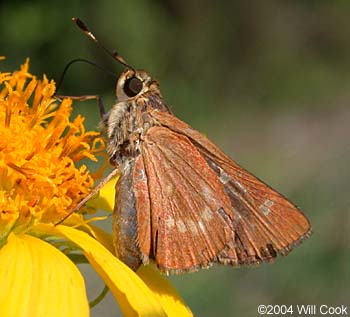
| Common Mellana (Quasimellana eulogius), female |
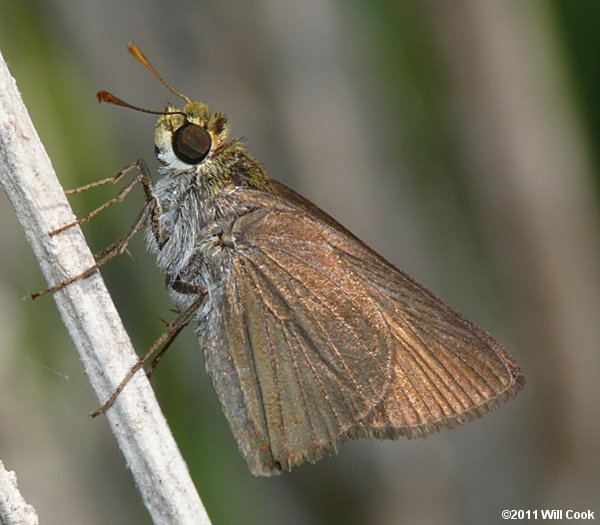
| Dun Skipper (Euphyes vestris) |
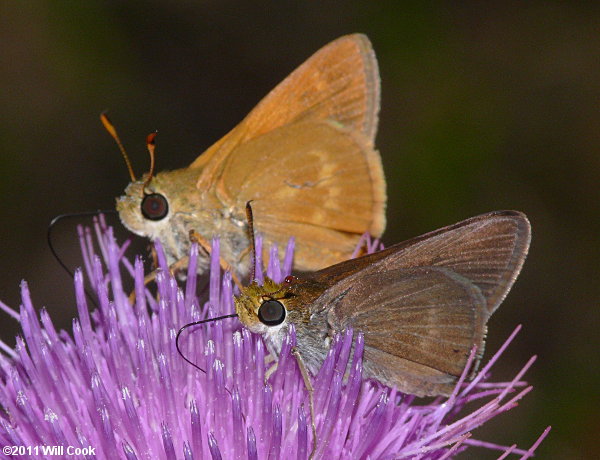
| Dun Skipper (Euphyes vestris) with Southern Broken-Dash (Wallengrenia otho) |
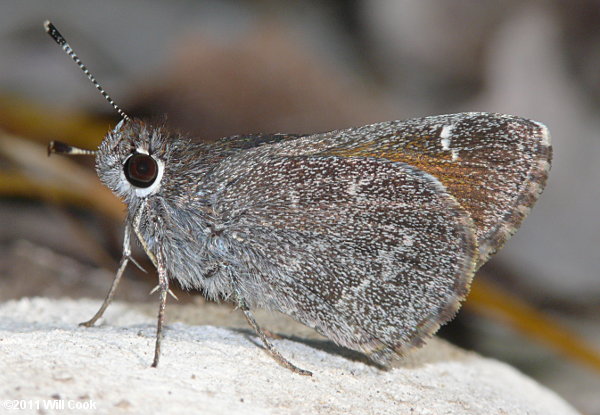
| Bronze Roadside-Skipper (Amblyscirtes aenus) |
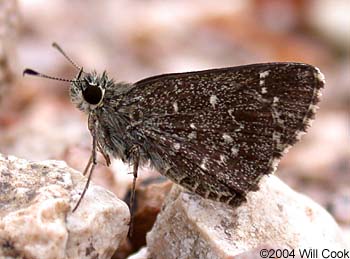
| Celia's Roadside-Skipper (Amblyscirtes celia), fresh |
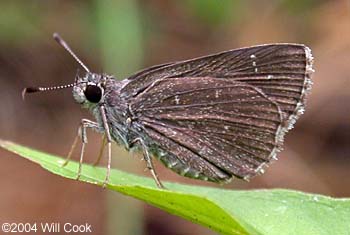
| Celia's Roadside-Skipper (Amblyscirtes celia), worn |
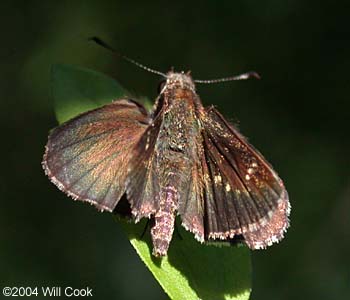
| Celia's Roadside-Skipper (Amblyscirtes celia) |
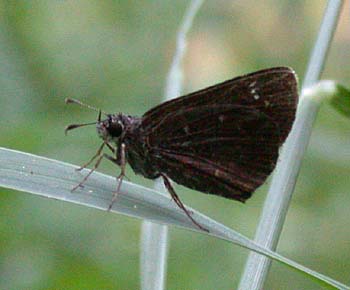
| Celia's Roadside-Skipper (Amblyscirtes celia) |
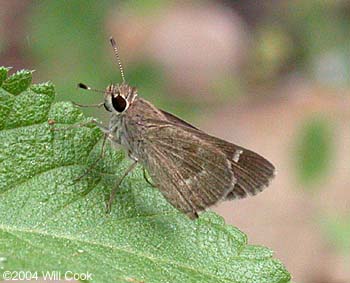
| Olive-clouded Skipper (Lerodea dysaules) Similar to the much more common Eufala Skipper, but with a distinctive postmedian dark patch on the hindwing below. |
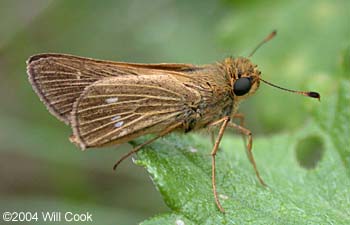
| Obscure Skipper (Panoquina panoquinoides) A denizen of salt marshes, related to the Salt Marsh Skipper. I don't know about you, but I've seen plenty of butterflies that are a lot more obscure than this tiny skipper. |
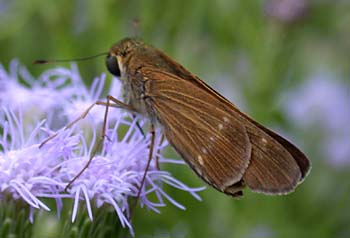
| Purple-washed Skipper (Panoquina lucas) "Purple-washed" is a poor choice for a common name -- the similar Ocola Skipper and other Panoquina species also have a purple wash when fresh. Called Panoquina sylvicola in the NABA checklist. |
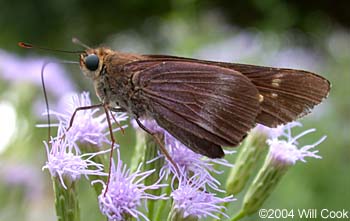
| Evans's Skipper (Panoquina evansi) This mega-rarity is like a giant Ocola Skipper with a distinctive broad white band and purple wash on the hindwing. Called Panoquina fusina in the NABA checklist. |
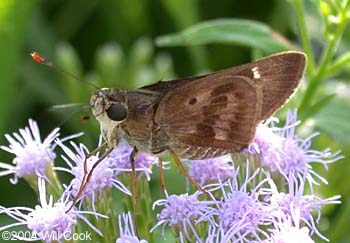
| Violet-banded Skipper (Nyctelius nyctelius) Nice of it to have a dark dot on the leading edge of the hindwing for easy ID! |
Papilionidae | Pieridae | Lycaenidae | Riodinidae | Nymphalidae 1 | Nymphalidae 2 | Hesperiidae 1 | Hesperiidae 2
Comments? Questions? E-mail me at cwcook@duke.edu